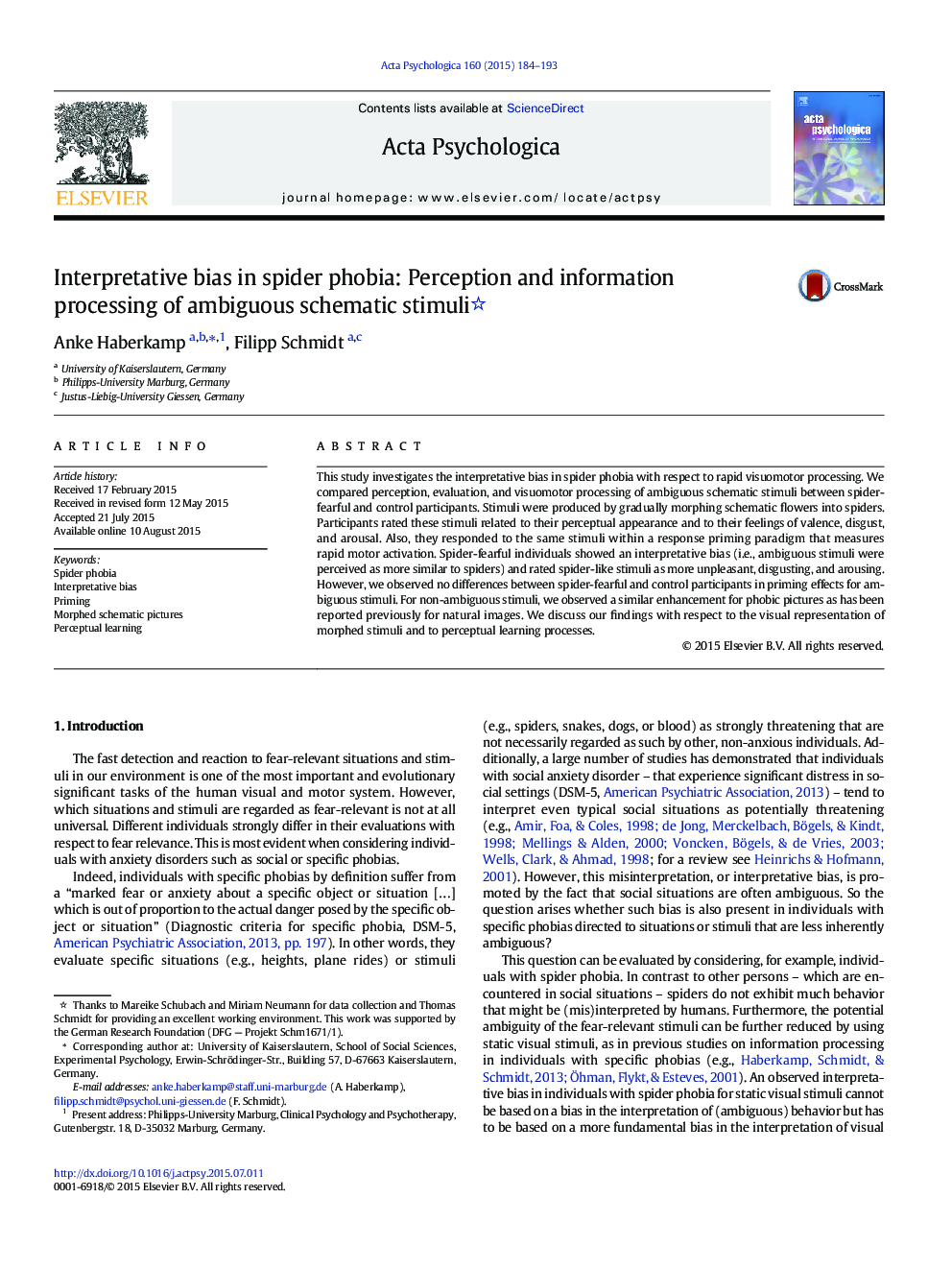| Article ID | Journal | Published Year | Pages | File Type |
|---|---|---|---|---|
| 919694 | Acta Psychologica | 2015 | 10 Pages |
•Spider-fearful individuals show an interpretative bias.•Spider-fearful individuals evaluate ambiguous stimuli as more negative.•Spider-like stimuli enhance information processing in spider-fearful individuals.•We suggest long-term perceptual learning processes as the underlying mechanism.
This study investigates the interpretative bias in spider phobia with respect to rapid visuomotor processing. We compared perception, evaluation, and visuomotor processing of ambiguous schematic stimuli between spider-fearful and control participants. Stimuli were produced by gradually morphing schematic flowers into spiders. Participants rated these stimuli related to their perceptual appearance and to their feelings of valence, disgust, and arousal. Also, they responded to the same stimuli within a response priming paradigm that measures rapid motor activation. Spider-fearful individuals showed an interpretative bias (i.e., ambiguous stimuli were perceived as more similar to spiders) and rated spider-like stimuli as more unpleasant, disgusting, and arousing. However, we observed no differences between spider-fearful and control participants in priming effects for ambiguous stimuli. For non-ambiguous stimuli, we observed a similar enhancement for phobic pictures as has been reported previously for natural images. We discuss our findings with respect to the visual representation of morphed stimuli and to perceptual learning processes.
